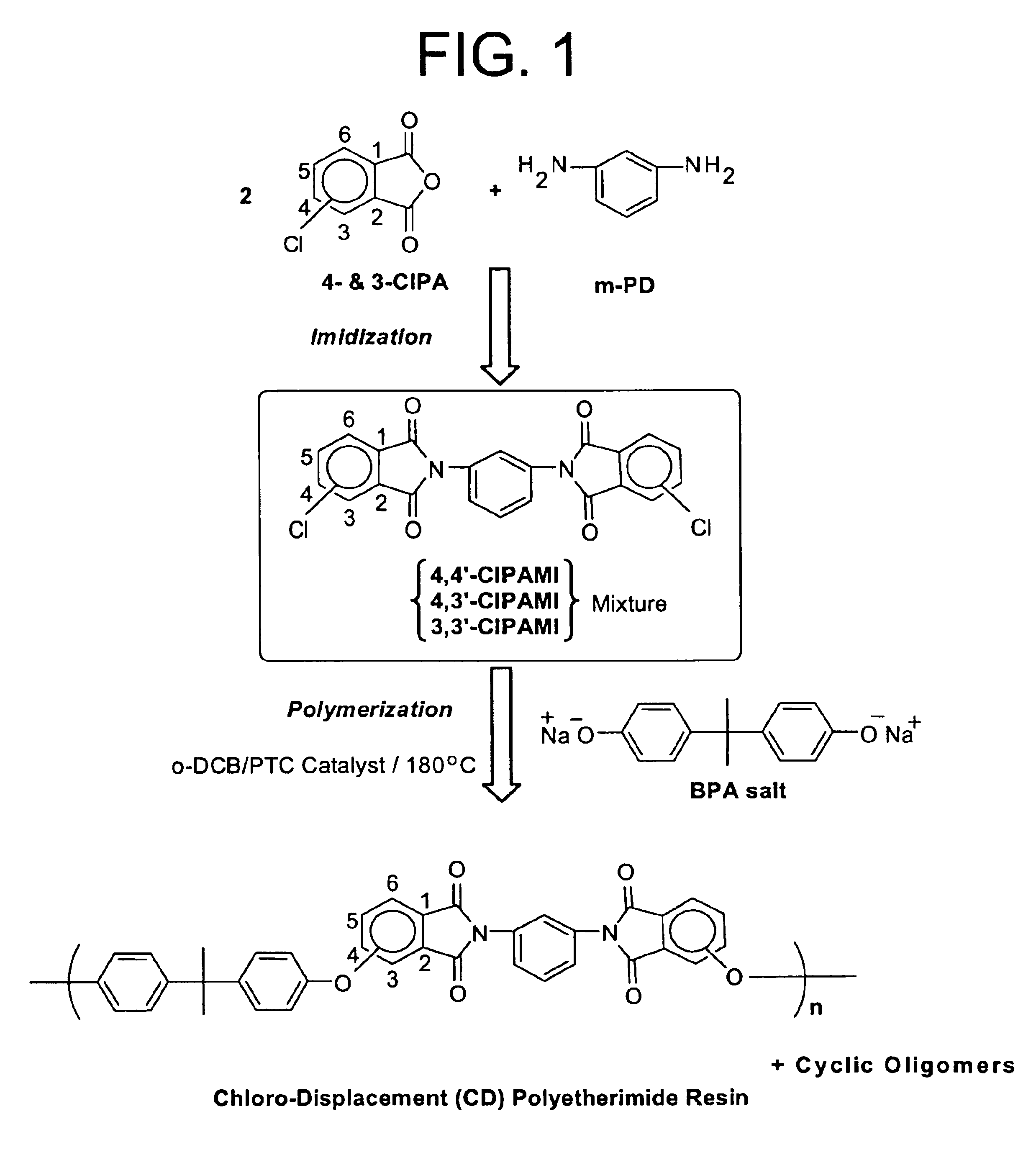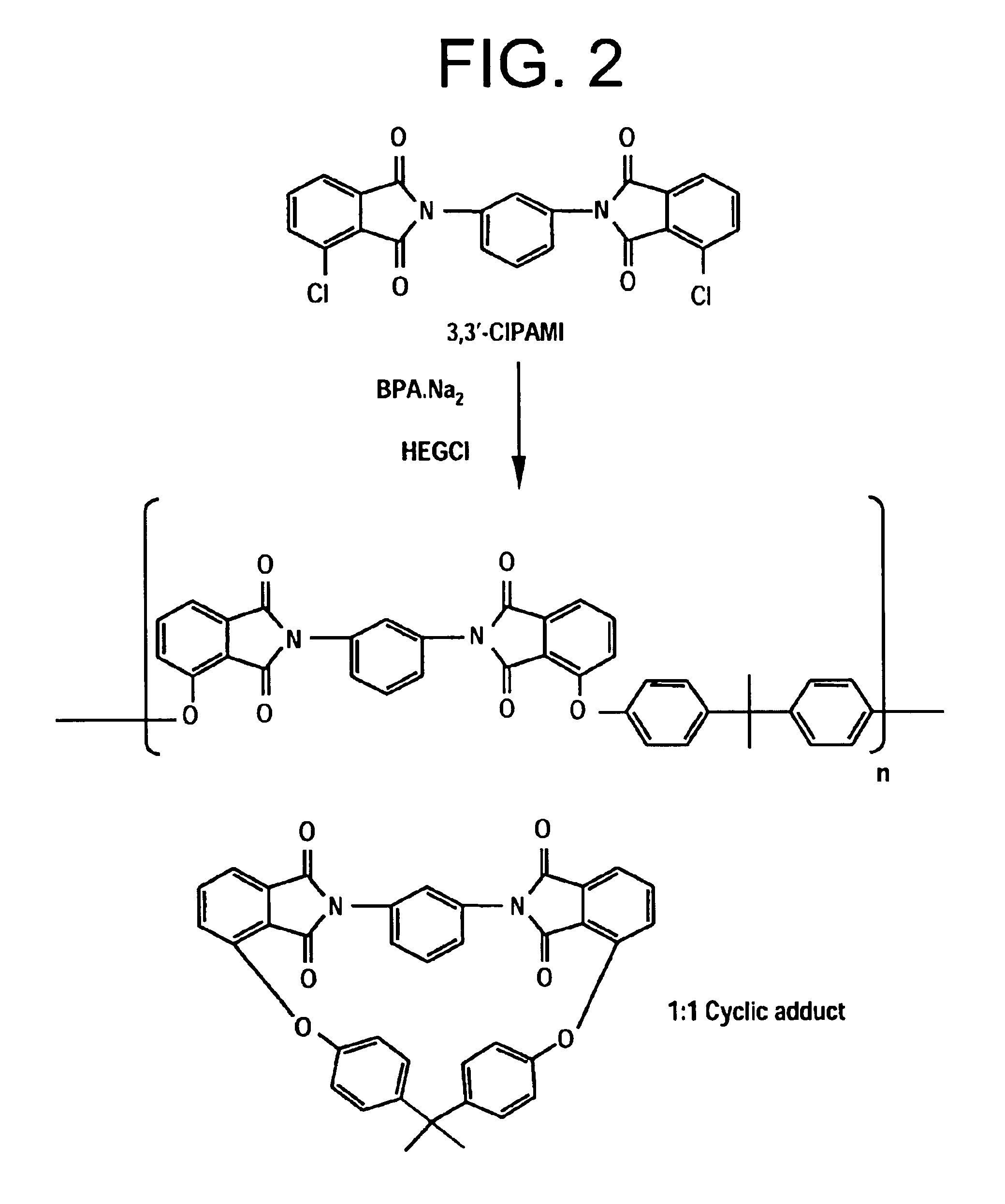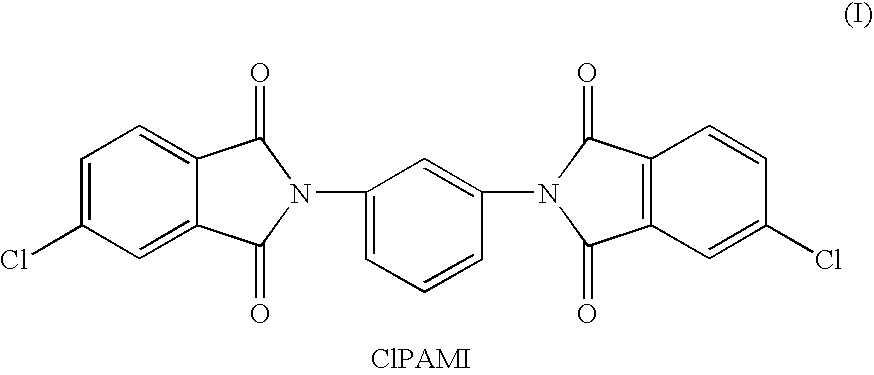Process for fractionation/concentration to reduce the polydispersivity of polymers
a polydispersivity reduction and polymer technology, applied in the field of fractionation/concentration to reduce the polydispersivity of polymers, can solve the problems of unreacted monomers, unsatisfactory low molecular weight by-products, and unreacted monomers in the final product, and achieve the effect of improving thermomechanical performance characteristics and reducing polydispersivity
- Summary
- Abstract
- Description
- Claims
- Application Information
AI Technical Summary
Problems solved by technology
Method used
Image
Examples
example 1
[0068]Four samples of a polyetherimide solution produced by reacting bisphenol-A salt with a CIPAMI produced by reacting mPD and 3-CIPA were prepared. 70:30 compositions were prepared by dissolving the polyetherimide in o-DCB and heating it to 180° C. with stirring to obtain a solution having a concentration of 10% solids. 5 grams of a 10% polymer solution (0.5 g polymer in 4.5 g o-DCB) were prepared with varying amounts (0.3, 0.5, 1.0 and 1.5 g) of toluene as an anti-solvent. The samples and the amounts of toluene used are set forth below in Table 1.
[0069]
TABLE 1Sample designation for toluene inducedfractionation of a o-DCB CIPAMI polymer solutionWt. Toluene (g) / 5 g. 10%MaterialSamplepolymer solutionLight Phase10.320.531.041.5
[0070]The polyetherimide solution was heated to a temperature ranging from 90° C. to 100° C. While stirring, toluene was added to each sample in the amounts noted above. The solution was then heated to a temperature from 140° C. to 145° C. to clear any turbidi...
example 2
[0074]Three different polyetherimide resins were produced by reacting a bisphenol-A salt with a CIPAMI monomer prepared from 70:30 4 / 3-CIPA and mPD (designated as samples 5, 6 and 7 in Table 3). Another sample was prepared by reacting a bisphenol-A salt with a CIPAMI monomer produced from 3-CIPA and mPD (designated as sample 8 in Table 4). Samples were fractionated by the addition of toluene and polydispersivity determined following the methods of Example 1.
[0075]
TABLE 3Large Scale PDF fractionationof mixed CIPAMI based polymersCIPAMI %Polymer BeforeCompositionFractionationPolymer After FractionationSample4 / 3-CIPAMw (K)PDIMw (K)PDI570:3049.92.7355.92.19670:3054.62.7558.42.27770:3046.52.850.92.07
[0076]
TABLE 4Fractionation results of all 3-CIPAMI based polymer% CyclicSample 8Mw (K)PDIMonomer% Total CyclicsPolymer as53.73.7110.413.2madeHeavy Phase58.52.423.03.9Light Phase5.1—6583
[0077]Table 3 demonstrates the results of the fractionation and the ability of the present methods to lower ...
PUM
| Property | Measurement | Unit |
|---|---|---|
| temperature | aaaaa | aaaaa |
| temperature | aaaaa | aaaaa |
| temperature | aaaaa | aaaaa |
Abstract
Description
Claims
Application Information
 Login to view more
Login to view more - R&D Engineer
- R&D Manager
- IP Professional
- Industry Leading Data Capabilities
- Powerful AI technology
- Patent DNA Extraction
Browse by: Latest US Patents, China's latest patents, Technical Efficacy Thesaurus, Application Domain, Technology Topic.
© 2024 PatSnap. All rights reserved.Legal|Privacy policy|Modern Slavery Act Transparency Statement|Sitemap



